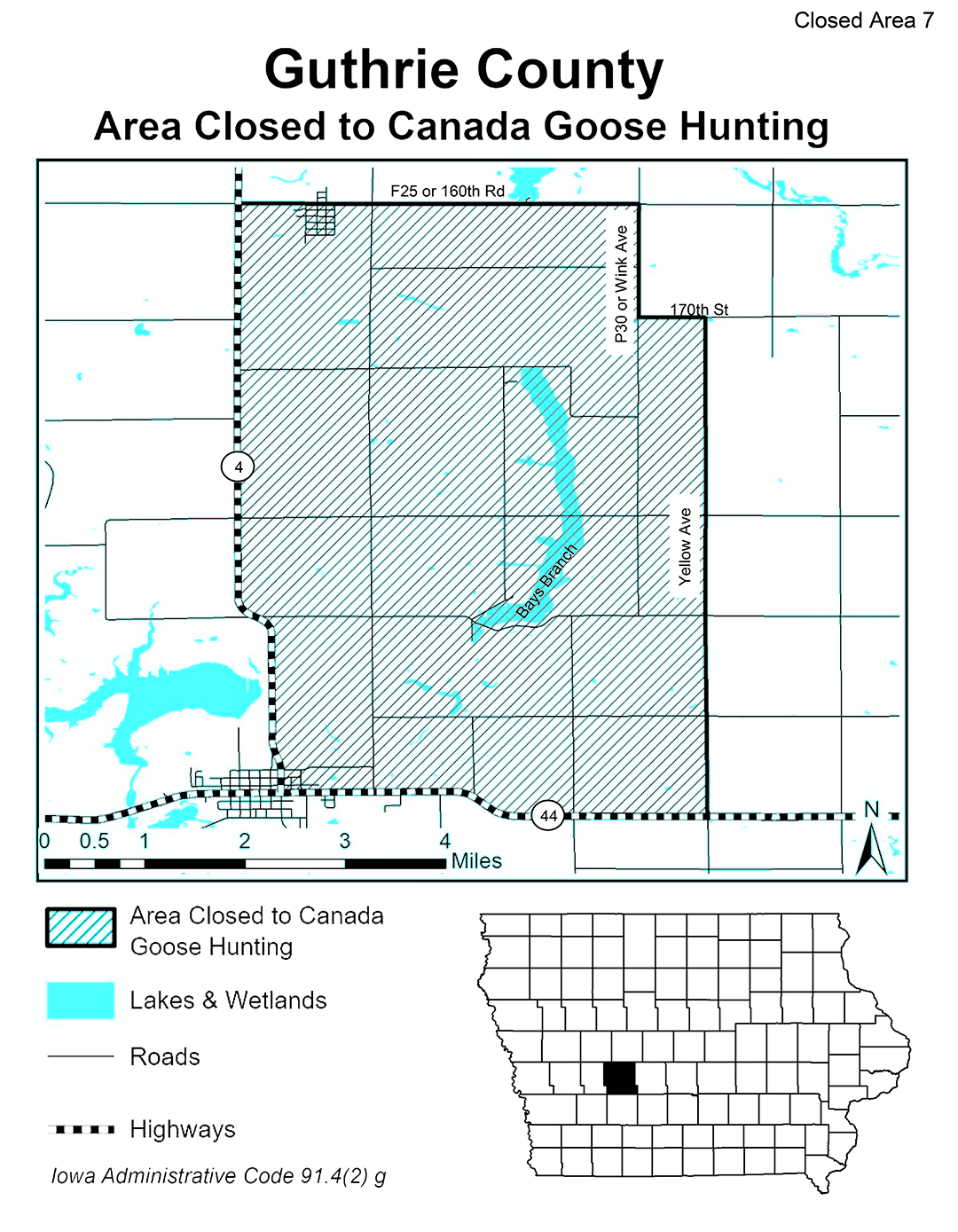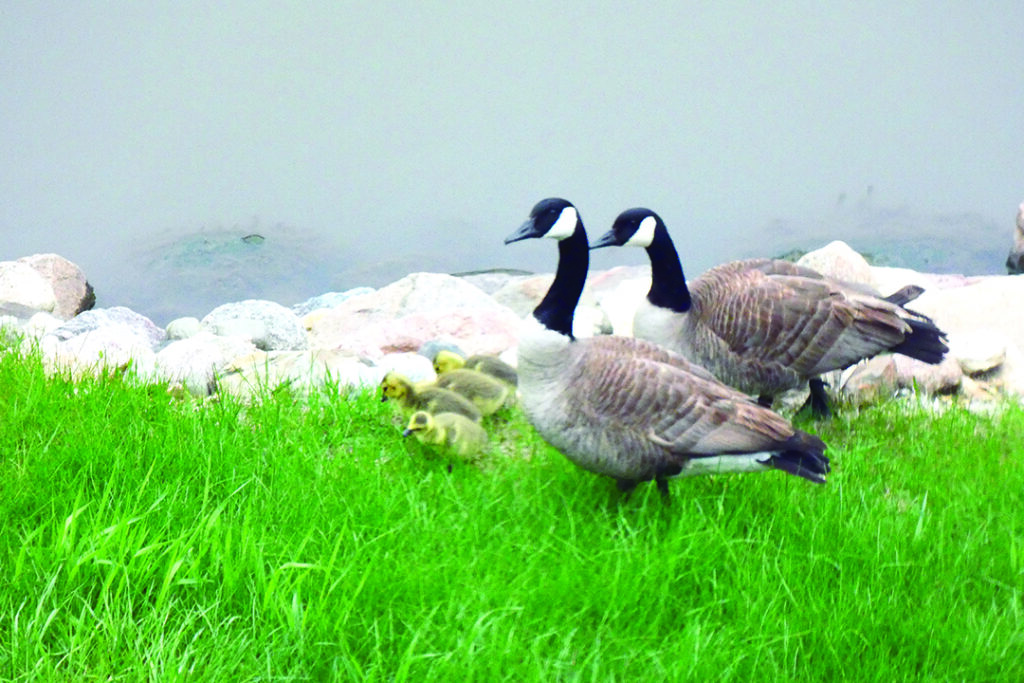The impact and history of Canada geese and tips to keep them off your property.
By Rich Wicks | Lake Panorama Times
At Lake Panorama, beautiful homes are built near a scenic body of water. This setting attracts many homeowners. Unfortunately, it also attracts Canada geese.
If someone were to design the ideal habitat to attract Canada geese and convince them to stay year-round, it would include easy access to water, large and easily accessible areas of short grasses, few predators and no hunting. Unfortunately, this is what Canada geese find when arriving at Lake Panorama. Because of that, the number of resident and migrating geese has swelled, causing various issues as people and geese interact.
“LPA is no stranger to the fact that we have a lot of geese on the lake, but, as far as fixing that problem, there’s just not a lot that we can do,” Lane Rumelhart, project manager for Lake Panorama Association (LPA), said. “We’re technically a residential area, so we can’t allow hunting on the water.”
Rumelhart said that the Iowa Department of Natural Resources (DNR) tracks the geese population and other information about the species.
“Every year, I give the DNR permission to band geese here,” Rumelhart said. “And every year, they seem to get around 30 to 60 banded. Some years, they’ve done more than 100.”
Regarding efforts to scare geese away or minimize their impact, Rumelhart said, “We tried some things in the past like running drones. I think they had some predator calls that were supposed to scare off the geese, but none of them have proven to be effective.”
Rumelhart said the LPA has a beach groomer that is used to pick up the geese “stuff” out of the sand.
“We usually do that about once a week during peak season and then once every couple weeks when the beaches are frozen in the winter,” he said.
The impact
The problems caused by the geese fall into two main categories: mere nuisances and environmental impacts. The nuisances include the sheer number of geese present at certain times of the year and the related damage to gardens, lawns and crops. Also, occasionally, Canada geese become aggressive, especially when protecting a nest or goslings.
The main environmental concern has to do with goose feces. Not only can the amount of droppings cause an unsightly appearance on lawns, docks and beaches, but the content of the droppings may lead to unfavorable water quality.
“The geese love the green, manicured lawns that they can graze on,” DNR officer Jeremy King said. “Obviously, there’s a huge problem with their defecation. They create quite a mess.”
The primary concern is that goose droppings are high in phosphorus, which can increase the algae growth in bodies of water. Geese do not produce phosphorus; they simply deposit it in their droppings. If geese are predominantly eating vegetation in a lake or pond, and then their droppings fall into that same body of water, the phosphorus level would not change significantly. But if geese are eating in fields and then coming back to the lake, phosphorus levels can climb. However, unless there is a very large year-round population of geese, most phosphorus in bodies of water may be from agricultural runoff.
“It’s no secret that the geese love Lake Panorama,” King said. “There are a few species, but the Canada geese are the predominant one.”
King says the geese tend to prefer more urban areas like Des Moines, Ankeny and Waukee, on small ponds with houses. He notes that the number of geese on traditional marsh areas or wetlands has gone down.
“The geese are adapting,” he said. “When they’re sitting at the Jordan Creek Mall pond, they aren’t getting hunted. Nobody’s harassing them. They go where there’s less pressure. When they go out to Lake Panorama, granted they can’t get hunted on the lake out there, but as soon as they fly out and feed in the fields in the morning or evening, they can get hunted in certain areas.”
History
The Iowa DNR website states that Canada geese nested throughout Iowa prior to European settlement but were mostly eliminated from much of the Midwest, including Iowa, by 1900. The Canada geese restoration program initiated in 1964 by the Iowa Conservation Commission, the forerunner to the Iowa DNR, has successfully restored this species to most of its former nesting range in Iowa. According to the DNR’s most recent estimate, Iowa’s Canada geese population is about 90,000.
USDA data
According to the United States Department of Agriculture (USDA) website, geese and other waterfowl can cause problems because they feed on a variety of plants, as well as crops, including corn, soybeans, rice, lettuce, winter wheat, barley and rye. Birds can also endanger aircraft on or near airports. In fact, one goose or duck can seriously damage an aircraft.
However, the Migratory Bird Treaty Act of 1918 and state laws protect all native waterfowl in the United States, including migratory and resident Canada geese. Under these laws, it is illegal to hunt, kill, sell, purchase or possess migratory birds, except in specific cases.
To prevent or minimize problems with geese, one of the best suggestions, according to the USDA, is to avoid feeding them. Even goslings are capable of finding enough food to survive. If geese become accustomed to being fed, they are likely to become dependent on this food source, and they may stop migrating.
Another suggestion is to modify landscaping. Geese and ducks are grazers and need short, green grass for food. Along water edges, planting less-attractive vegetation, such as pachysandra, periwinkle and euonymus, may help discourage geese from staying in the area. The most effective tools for controlling waterfowl movement are fences, hedgerows and other physical barriers.
Hunting
The Iowa DNR currently has designated a “No Hunting Zone” for Canada geese in a portion of Guthrie County. The area includes Bays Branch and is bordered on the west by Highway 4 and on the south by Highway 44.
King acknowledged that some people may advocate for opening up more areas to hunting or extending the season, but he said those are not necessarily the best ways to control the population.
“Biologists’ concern is that if we start opening up everything in the Lake Panorama and Bays Branch area for shooting Canada geese, in a year or two, those geese will realize there’s a lot of pressure here, and they’re going to migrate over to the cities, and we’ll run them out of the area to where very few will get harvested.”
Migration
Although Canada geese are considered migratory birds, there is no single migratory pattern, and some geese no longer migrate at all.
“At times, Lake Panorama will house, during the peak of the migration in the winter, close to 20,000 geese in the area,” King said.
“Some of the Canada geese do, in fact, migrate here from Canada for the winter, but that’s not true of all the geese,” he said. “Currently, three have an attached radio transmitter. The last years, they have stayed at the Lake Panorama area the entire time. They summer here, they hatch little ones here, and they don’t migrate south at all. But we do have birds that are raised locally, on Lake Panorama, that we band, that are harvested in Oklahoma or southern Missouri or Arkansas. Certain ones migrate, and some don’t.”
King said the bird migration is fascinating.
“You just don’t know which way they’re going to go,” he said. “Weather events can cause different migrations. Typically, with Canada geese, when we get hard — like 30- to 40-mile-per-hour north winds — that’s when we see most of our geese come from the Minnesota and Canada areas up there.”
He added that Canada geese typically migrate following the snow line. So, in a late-starting winter, the geese stay up north longer.
What works?
King says the best way to minimize geese problems for homeowners is to have a dog.
“The dog is probably the best non-fatal option,” he said.
“I think members that have pet dogs and let their dogs out in the backyard, they do a pretty good job of spooking the geese onto the next property,” Rumelhart added.
“I’ve also seen folks with a single electric fence wire, about 8 or 10 inches off the ground,” King said. “That seems to work pretty well.”
King said predator decoys have limited impact but can work if moved around.
“I’ve seen folks with coyote decoys, but the birds kind of get used to them after a while,” he said. “But if you move it once in a while, you’ll see pretty good results from that as well.”
King points out that the geese are protected by the federal government. In the spring, when they are nesting, it is illegal to “mess with them.”
“We do have a federal biologist that we work with, and our local biologist, that can help you come up with solutions if you have a major issue going on,” he said.
King says the situation is a double-edged sword.
“We love having a lake here,” he said. “We love the beauty it provides, but it also provides a refuge for the geese. I couldn’t imagine a bunch of people out there shooting geese every day. Homeowners probably wouldn’t appreciate that. I know they don’t appreciate the geese either, at times.”
King reminds property owners that the geese are more of a seasonal concern.
“I think they’re typically more of a problem in the spring, because, in the winter, they usually keep a hole open in the middle of the lake, so they’re typically not in people’s yards,” he said.
Hunting
Hunting of Canada geese in Iowa is divided into three zones (north, central and south). Guthrie County is in the central zone, in which hunting ended Jan. 20. Each hunter has a bag limit of three Canada geese. According to DNR data, over the past three decades, the statewide annual harvest of Canada geese has fluctuated from 25,000 to nearly 80,000, with most years seeing a harvest between 45,000 to 65,000. Anyone with knowledge of illegal harvesting of Canada geese is encouraged to call the Iowa DNR’s “Turn-in-Poachers” line at 1-800-532-2020.
Nesting
In Iowa, Canada geese usually begin nesting between mid-March and mid-April. Females lay an average of five or six eggs (one per day) and will incubate them for 28-30 days before hatching occurs. It’s during this nesting time that the adult geese are most aggressive, as they try to protect the nest and their goslings.
Sharing nature
King encourages property owners to remember that the natural beauty of the Lake Panorama area includes wildlife like geese, deer, raccoons, foxes, mink, bobcats and other animals.
“I think a lot of folks need to remember that we have a beautiful lake, and we’re going to have wildlife that’s going to be around there,” he said. “We built homes in their home.”


